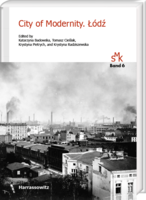|
|
more titles of the subject:
Download:
Please note: With adding digital Products to your cart
the payment will be handled via PayPal. The download will be provided after the payment is confirmed. City of Modernity consists of 33 essays about Łódź, a city that started out as an agricultural settlement and became a metropolis within a single generation, all thanks to technological progress. Its population of 767 in 1820, it had grown to 767,000 by 1939. At the turn of the century, it emblematized modernization and industrialization, and was a symbol of industrial-era modernity. It was often compared to Manchester and its truly American pace of development was admired. The city’s rapid economic career was impressive, but it also exacted a high social cost.
The authors, representing a variety of fields (history, sociology, literary, theatre and film studies, cultural anthropology) analyze many aspects of Łódź’s economic, social and cultural life before the outbreak of World War II. In reference to Łódź modernism, they explore notions like modernity, metropolitanism and peripherality, multi-culturalism and multi-ethnicity (Łódź was a labor destination for German settlers, Polish peasants, Jews, as well as newcomers from the Russian interior), the phenomenon of workers’ movements which peaked during the revolution of 1905, and the expansion of mass entertainment. The publication also looks at issues linked to urban infrastructure, animators of cultural life, and the emergence of new religious, political, and emancipation movements. |
|||||||||||||||||||||||||||||||||||||||||






